Content marketing is only about creating copy, right?
Wrong.
Obviously, crafting the messaging for brands is a staple task — without the all-important words within a campaign, there would be very little to entice potential customers with. But, the way marketers manage content production, storage and data analysis is extremely important for success. Without content management, advertisers may have a difficult time building, organizing and modifying content to reach their goals.

So, how are industry professionals handling their content management in 2023, and what elements of this process (or a complete lack of a process) are potentially holding advertisers back?
To find out the answer to our questions and discover where management gaps may lie, we conducted a survey that was sent to and answered by over 120 marketing professionals.
Here are some of the main trends that we noticed regarding the respondents’ content management practices:
Key Findings
- Content topic ideation processes are varied. 55% of respondents said they use a shared cloud-based document to track content topic ideas.
- Reporting is an essential element of content marketing, and 55% of marketers’ companies present campaign results monthly or bi-monthly.
- There are a variety of different tools available to marketers for managing content marketing campaigns, making it difficult to streamline procedures. Only 14% of professionals said they use one management platform that does everything they need. Of the 86% who said they use multiple tools, the majority (two-thirds) said they wish they had a single tool to consolidate content management.
- Although there are several challenges that marketers face during the content marketing process, 50% of respondents said the most difficult aspect is ensuring the created content ties to a goal.
- Content marketing success looks different for everyone, but consistency, research, strategic ideation and organization were listed as some of the most vital factors for a job well done.
Subscribe to
The Content Marketer
Get weekly insights, advice and opinions about all things digital marketing.
Thank you for subscribing to The Content Marketer!
Who Did We Poll?
We’re going to dive deeper into each of our key findings, but before we start, let’s get a snapshot of who answered our survey questions.
The 120+ professionals are all in the marketing industry in some capacity. We received answers from executives (35% of respondents), content marketers (30%), digital marketers (17%), SEO marketers (14%) and other advertising positions outside of these categories (4%).

When it comes to the whole content marketing process — from ideation to launch — it’s all hands on deck for some companies while others require fewer people, depending on the size of the agency. 43% of respondents have 1 to 3 people involved in the content marketing efforts, 40.5% have 4 to 6 employees as part of the process, 9% have 7 to 9 people and 7% have 10 or more marketers in the ring.
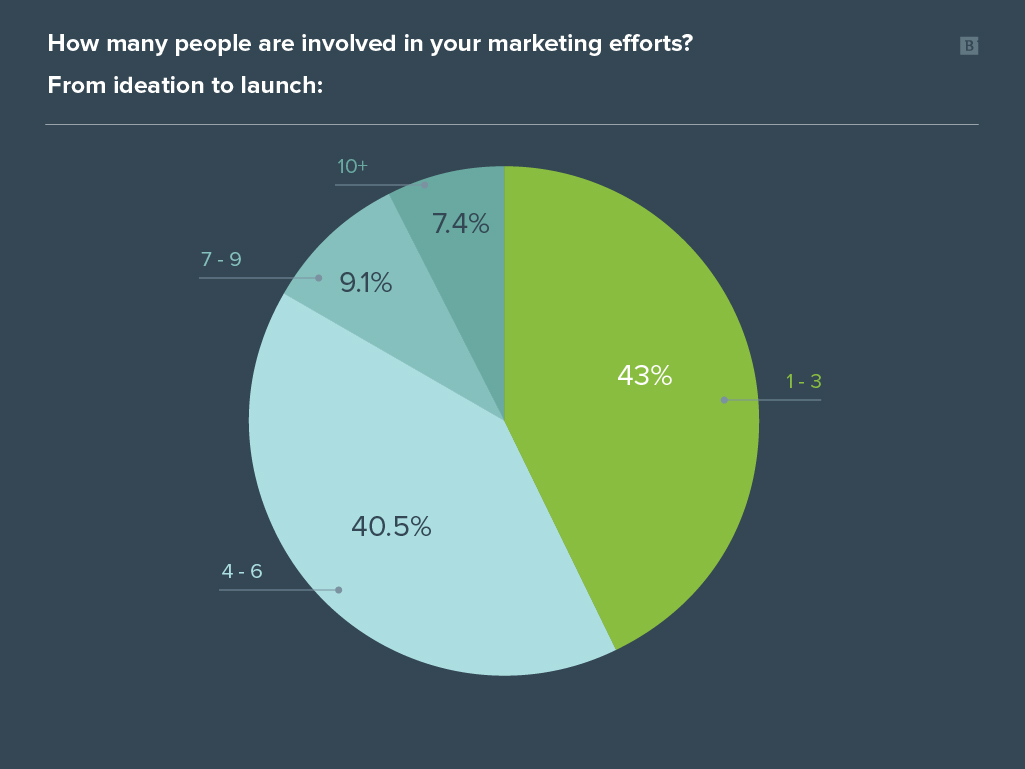
No matter the amount of marketing professionals the respondents have on their team, the advertising creation process takes time. When looking at each step — content ideation, content creation, publishing, promoting content and measuring performance — respondents spent the least amount of time, on average, on the content ideation, publishing and measuring performance. On average, respondents spent anywhere from 0 to 20 hours completing these stages. The most time spent in these phases was in content creation and promoting content, with the average being anywhere from 20 to 60+ hours total.
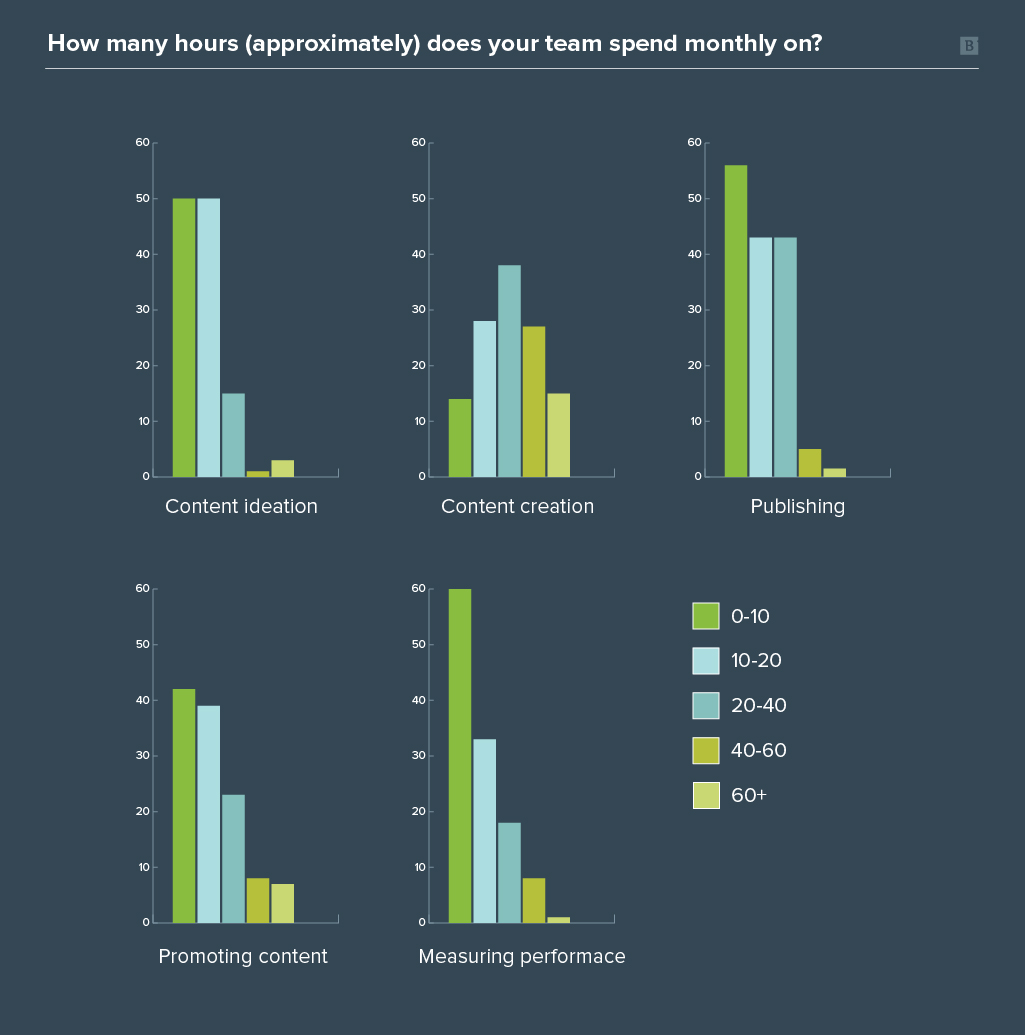
The respondents like to serve their target audience with a variety of different content types. On average, the most-created types of content on a monthly basis are blogs, emails, social posts and graphics, with eBooks, white papers, videos and webinars being made a bit less frequently.

Ready to take a peek at our key findings? Let’s go!
Takeaway 1: 55% of Respondents Use a Shared Cloud-Based Document To Track Content Topic Ideas
Content creation has many moving parts, and the ideation phase can make or break a project long before a single word is written. Respondents use several methods for creating and managing new content topic ideas: a shared cloud-based document (54.5%), a cloud-based software platform (10%), Microsoft Word (9%), an email thread (7%) and a physical notebook (1%). About 16% of the marketers stated that their company has no specific process when coming up with content topics.

After the content is created and ready to be shared, 26% have a content calendar that they use consistently that works well for them, and 38% use one for most but not all of their publishing. The rest of the group either has a content calendar but rarely follows it (19%) or avoids using one altogether (17%).
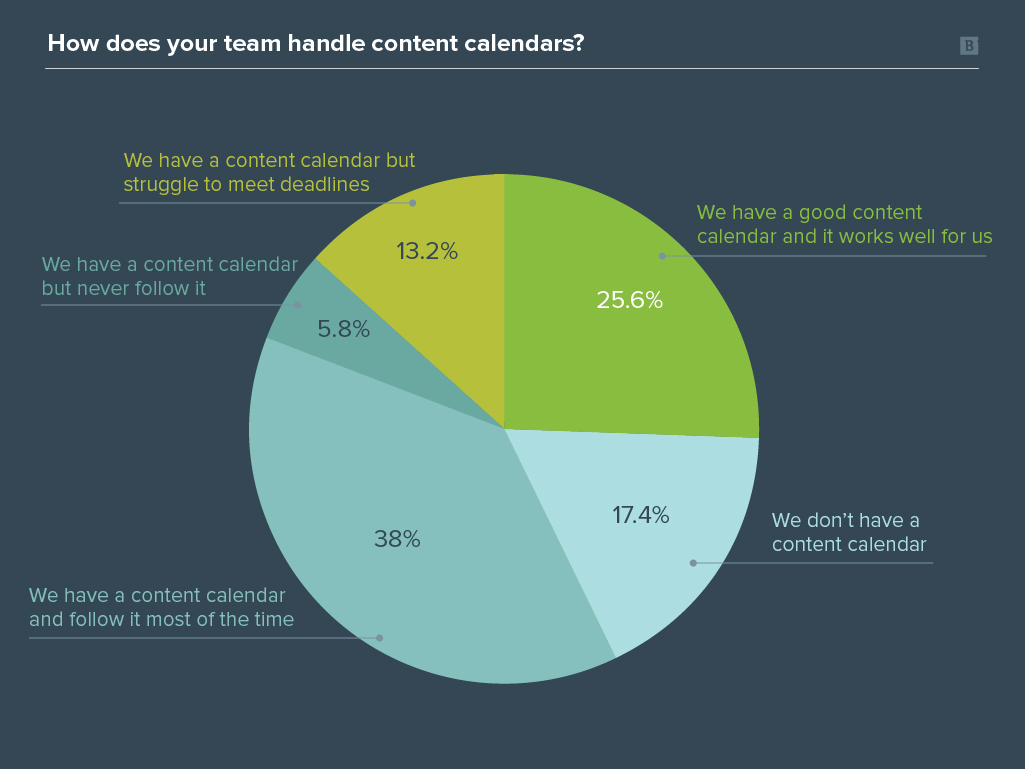
The world isn’t short on methods for managing content marketing efforts, but what are the most-used systems among our respondents? A large percentage use project management software (48%), followed by other top options, including a spreadsheet (37%) or a shared digital calendar (11%).
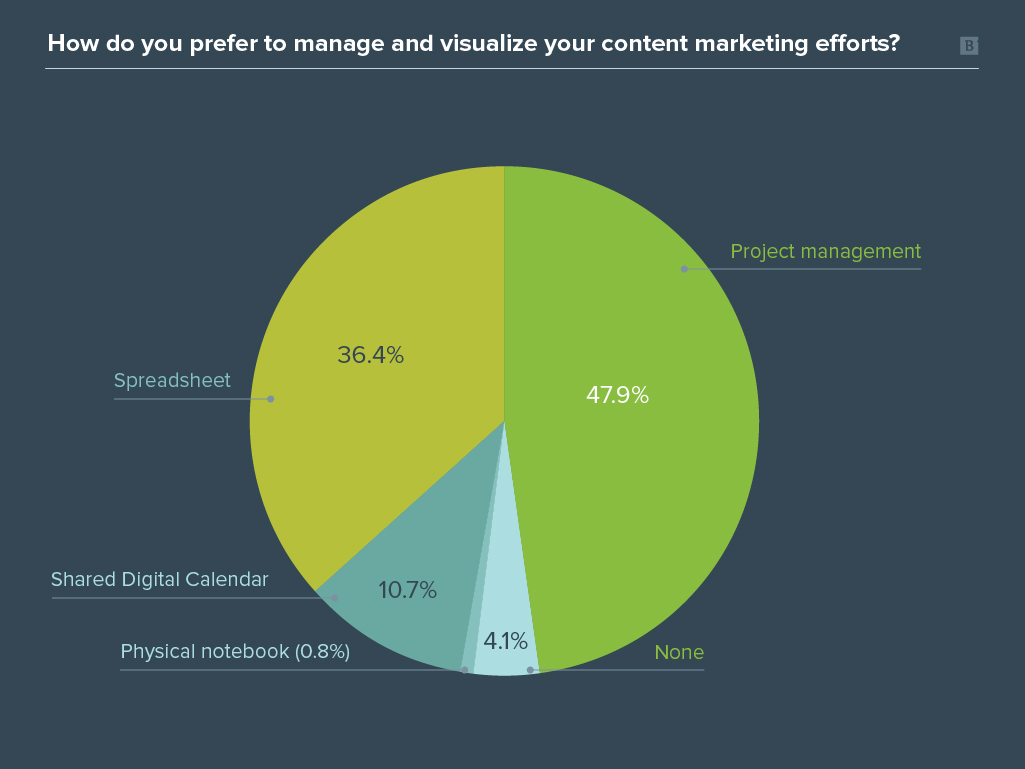
Takeaway 2: 55% of Marketers’ Companies Present Campaign Results Monthly or Bi-monthly
One step of the content management process that doesn’t often get the credit or time it deserves is reporting — a crucial way for marketers to determine if their efforts are successful or not. As mentioned above, 55% of those surveyed report their campaign results on a monthly or bi-monthly basis. That said, 9% of marketing professionals responded that they don’t report on their findings at all.
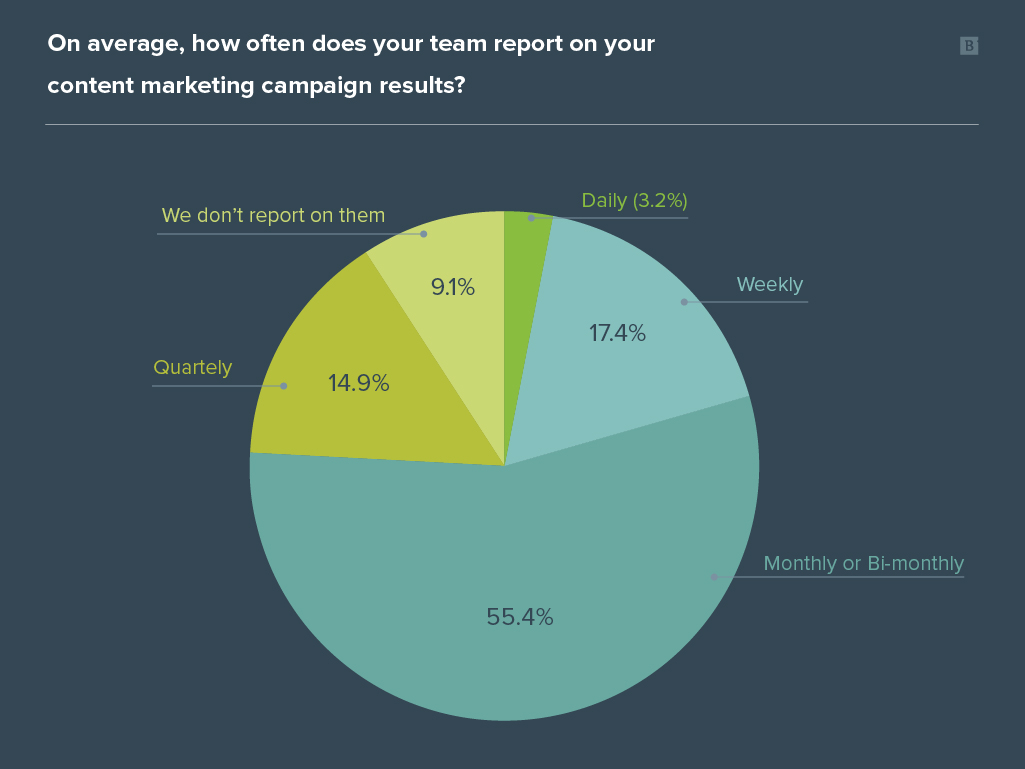
It’s also interesting to note that reporting isn’t the only varied part of content management — the storage of published assets also has several different approaches. Of the 120+ respondents, 55% keep all completed content in a shared cloud-based file. Other places where published pieces are kept include:
- 17% – Content management software.
- 15% – Scattered across multiple places.
- 6% – Someone’s computer.
- 5% – Cloud-based software.
- 3% – Email.
- 1% – Not stored anywhere.
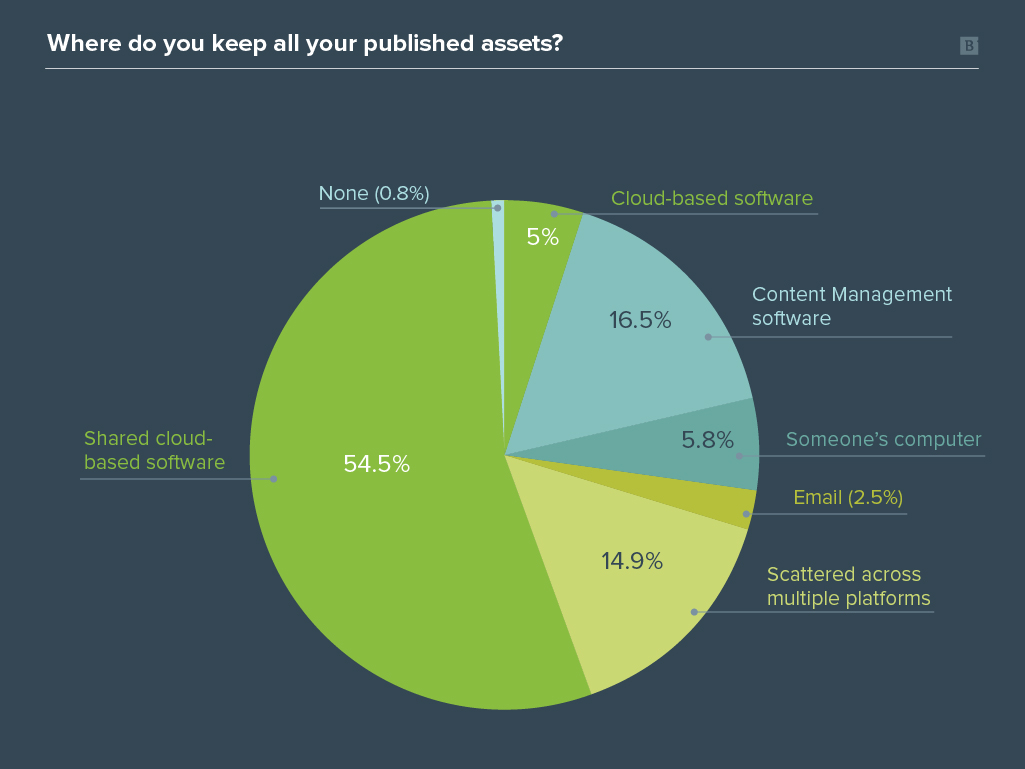
Takeaway 3: Only 14% of Professionals Use One Management Platform That Does Everything They Need
When doing a quick online search for marketing management tools, you’ll be met with thousands of options. How many of these tools are currently being used by the respondents throughout their content creation process?
Surprisingly, only 14% of professionals use just one management resource that does all the planning, tracking and performance analysis. Most of the respondents employ anywhere from 2 to 5 systems to get the job done (79%).
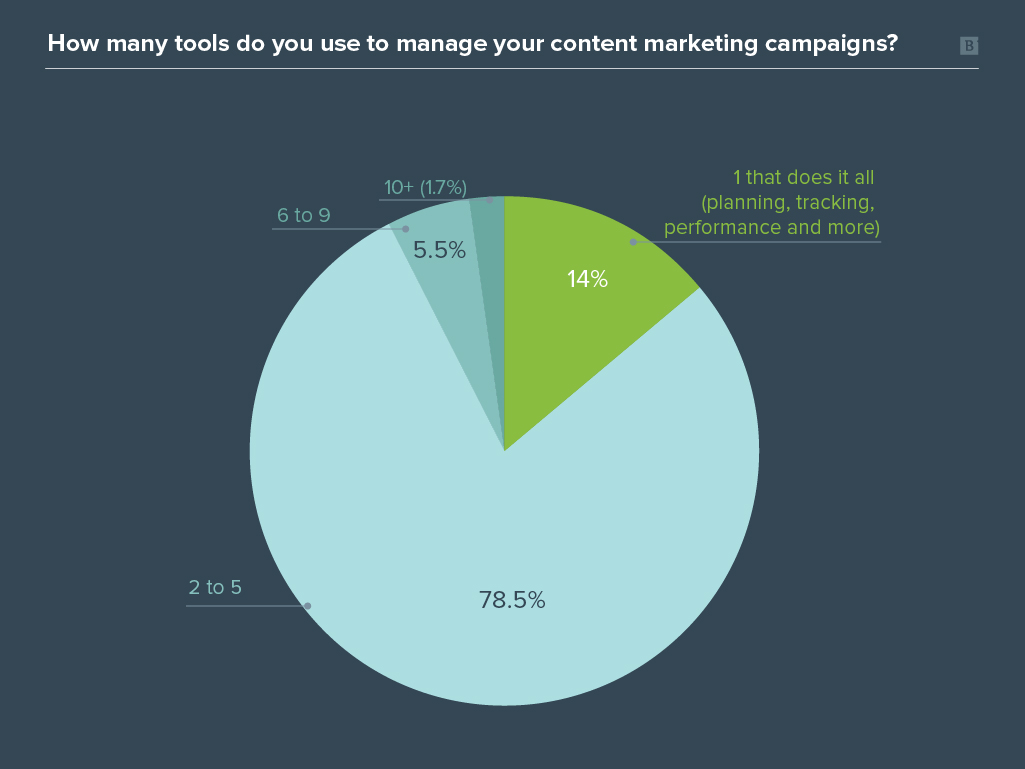
For those that stated that they only use one tool, these are the most commonly used:
- Buffer.
- Hubspot.
- MissingLettr.
- Pardot.
- Smartsheet.
- Teams.
- Word.
For the other chunk of the surveyed group that uses multiple platforms, we asked them if they’d prefer to cut back to only one tool. 66% stated that having a consolidated resource would be preferred.
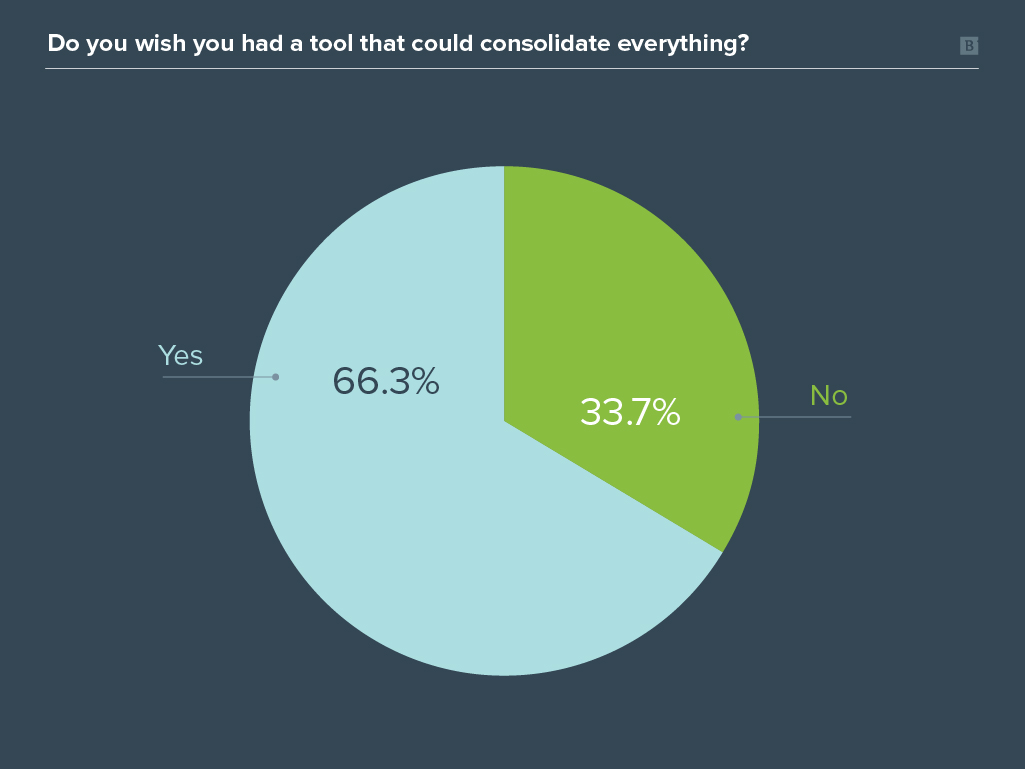
Takeaway 4: 50% of Respondents Said the Most Difficult Aspect of Content Marketing Is Ensuring the Created Content Ties to a Goal
Content marketing comes with its fair share of challenges, the main one being the ability to write content that works toward a particular goal. In fact, 50% of the respondents said this was the hardest part of writing copy for their industry. This is particularly important (and potentially detrimental) when using content as the main outreach to gain traction with a target audience — without a goal in mind, the content is sure to miss the mark, every time.
Other reported problems with the content marketing process include collaboration among multiple stakeholders (48%), keeping tasks on schedule to meet project deadlines (41%) and ensuring content is on-brand and on-brief (34%).
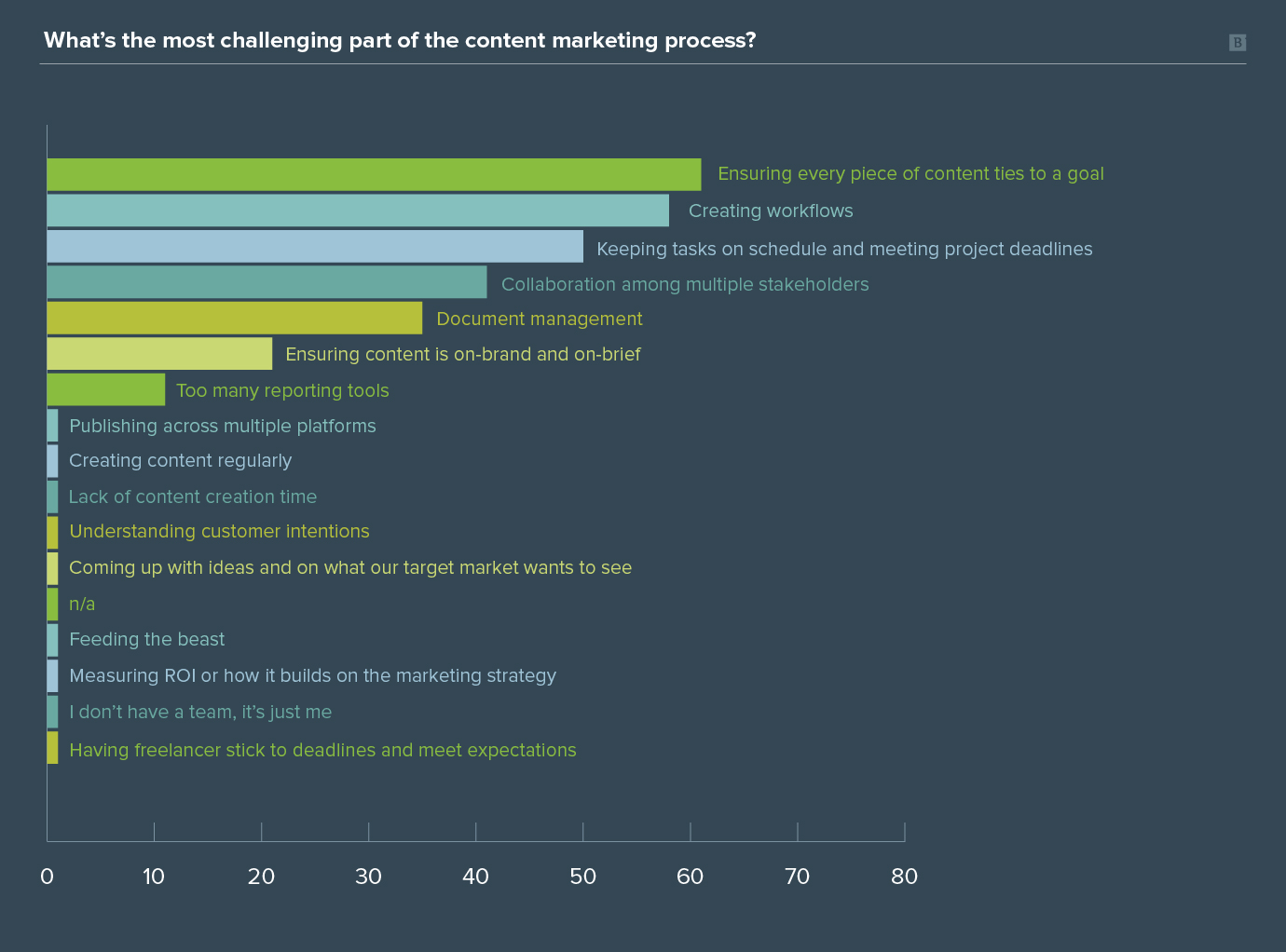
Takeaway 5: Consistency, Research, Strategic Ideation and Organization Were Listed As Some of the Most Vital Factors for Content Marketing Success.
60% of the surveyed marketers are either satisfied or very satisfied with their company’s content marketing results. This is a large percentage, but it also means that 40% of the group isn’t experiencing that same level of confidence. To triumph in content marketing efforts, the respondents said the most important factors are consistency, research, strategic ideation and organization.
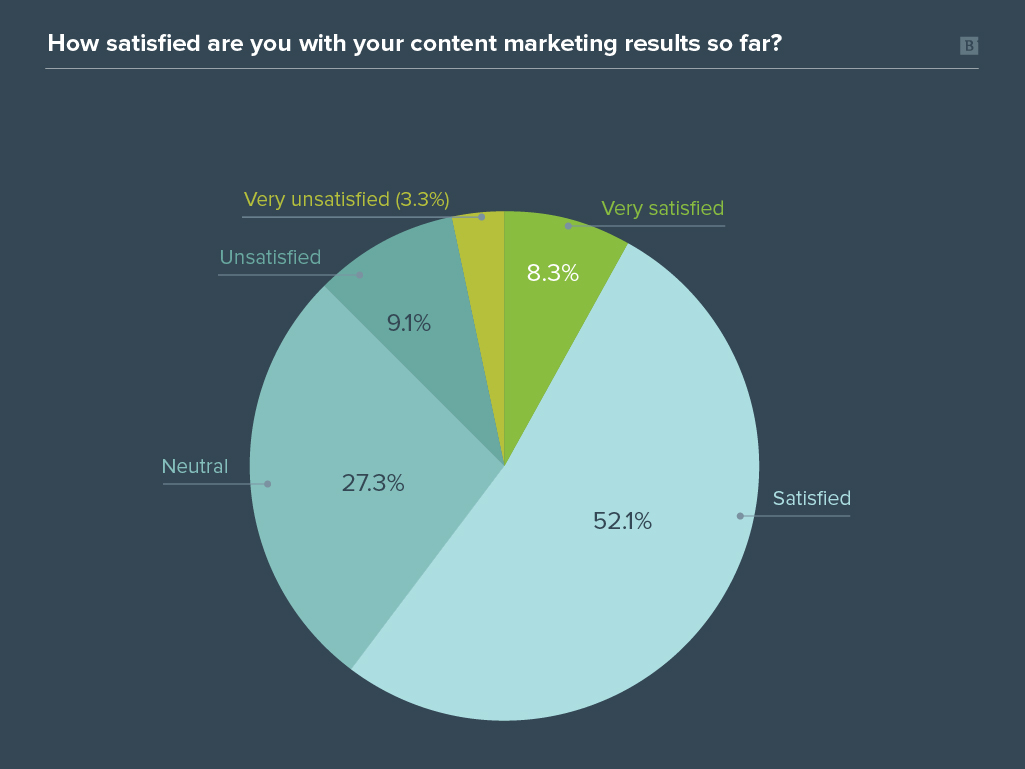
How can marketers find more success within their companies? By using a management system that brings all the stages together into one, well-oiled machine. But, what’s most important to our respondents when looking for this type of tool? Ease of use, cloud-based software, efficient collaboration, workflow management and optimized organization were all high on the list of must-have resource abilities.
“Flexibility is the most important feature that a content management tool should have,” Tom Leighton from Sofary noted.
“The right tool is one that’s able to adapt to the changing needs of your business as it expands. This means it should be able to handle a large volume of content, control multiple types of content and support multiple users and teams. A flexible and scalable content management tool can save you time and money in the long run by eliminating the need to constantly switch between different tools and platforms as your business grows. It also makes it easier to manage and track the performance of your content and to scale up or down your marketing efforts as needed.”
Wrapping Up
Content marketing is constantly evolving, making a good management system all the more important for marketing teams. According to our results, successful content marketing comes from consistently writing and communicating with your readers, researching what people want to know, filling in those content gaps with strategic planning and ideation, and keeping your content process organized and streamlined — elements that a solid content marketing management software should be able to deliver to users.
If you aren’t using a content management tool to maximize processes and deliver improved results, then it might be time to add one to your resource toolbelt as soon as you click out of this page.
Editor’s Note: Updated April 2024.





